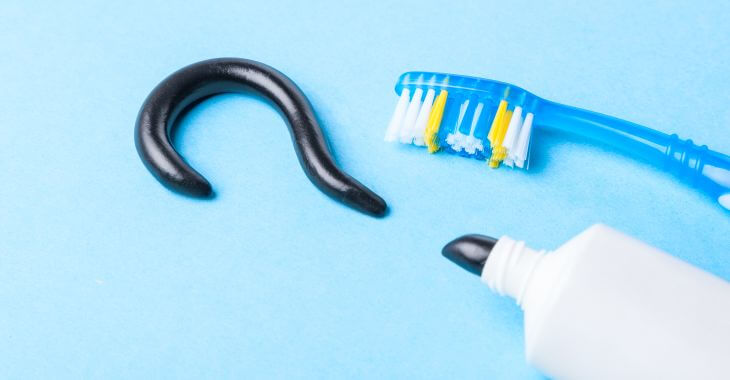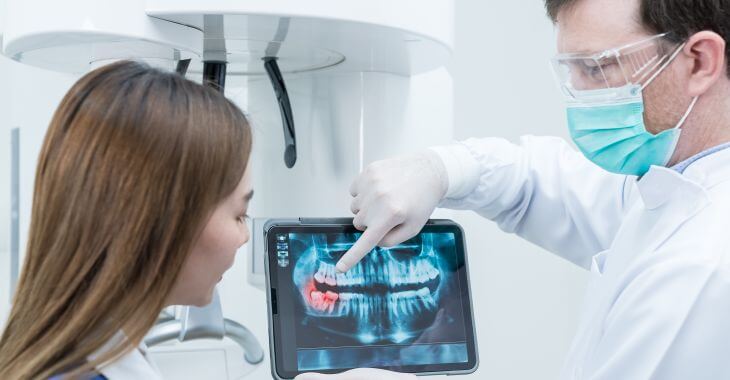Prevention and Treatment of Cavities In Between Teeth

Cavities or tooth decay are caused by the acid produced by bacteria feeding off food particles on the teeth. Brushing and flossing are meant to remove food debris, bacteria and plaque, which can prevent tooth decay and oral conditions like gum disease. Cavities between teeth are harder to prevent and treat due to their location. For better oral health, it is important to prevent cavities in between teeth and know the right treatment when they occur.
Cavities, also called tooth decay or caries, are a result of bacteria on the teeth feeding on sugary substances. There are always bacteria in the mouth, but when food debris is left behind after eating, bacteria feed and create plaque. This film makes it harder to remove bacteria, allowing them to flourish. The acid they produce can break down the enamel on teeth, creating holes or cavities of tooth decay. Oral hygiene can remove the bacteria and plaque, but it is harder in between teeth, which is why cavities between teeth are common.
Cavities between teeth are called interproximal cavities. They are more difficult to prevent, identify and treat. The tight space between the teeth can be hard to effectively clean, giving bacteria a place to hide. Plus, when cavities form, they are hard to see and may not produce any symptoms until they grow in size. Unfortunately, cavities between teeth can spread and one cavity can become multiple areas of decay on both of the adjacent teeth.
Preventing Cavities In Between Teeth
Oral hygiene is the best way to prevent cavities between teeth and other oral health issues like gingivitis. Brushing your teeth at least twice a day or after meals with a fluoride toothpaste is the first way to remove bacteria, food and plaque from the teeth and keeps the tooth enamel healthy. For cleaning between the teeth, flossing or interdental cleaning is needed in addition to brushing. Flossing at least once a day can remove plaque and bacteria that are the main cause of cavities or tooth decay.
While brushing and flossing are the best regular option to prevent cavities in between teeth, it can be difficult for some areas. Tightly positioned teeth or back molars can be hard to floss. If plaque is left between teeth, it can harden into tartar. This gives bacteria a place to hide, increasing risks of cavities and gingivitis. Only a dental professional can remove tartar during routine teeth cleanings, which most people need at least twice a year.
There are some other options for prevention of cavities. Kids and teens are more prone to cavities and some dentists may recommend teeth sealants for the molars to prevent cavities. Eating less sugar and a healthier diet can be beneficial for improved oral health. Your dentist can discuss the best ways to prevent all types of cavities, including decay between the teeth.
Detecting Cavities Between Teeth
How do you know if you have a cavity forming between teeth? These areas of tooth decay are harder to see, and you may not have any symptoms in the beginning. As interproximal cavities grow, they decay the tooth enamel and burrow down into the dentin. Once in the dentin, decay can cause discomfort, as it may irritate the nerves in the tooth. Some symptoms of an interproximal cavity between teeth include:
- Sensitivity to hot or cold
- Bad breath, even after brushing
- Toothache
- Pain in tooth when chewing
- Stains or discoloration between the teeth
If you are having symptoms of cavities, it is important to schedule a dental appointment immediately. Symptoms are signs that the tooth decay is tunneling deeper into the tooth, and it may have spread to the adjacent tooth. Your dentist can perform an exam and/or x-rays to determine the extent of decay and provide the right treatment to remove and fill your interproximal cavity.

Treatment for Cavities In Between Teeth
The good news is that cavities between teeth can be eradicated in one visit to your dentist if they are caught in the early stages. Smaller cavities can be drilled out and filled with composite resin – most dentists prefer composite fillings to metal amalgam fillings and they can be color-matched to your teeth. If an interproximal cavity is deep or spread across the surface of the tooth, it may require more extensive repair. Some severe cavities can require a root canal if decay reaches the nerve roots, or a crown to replace lost enamel.
Cavities in between teeth is common, but it is also preventable with excellent home oral hygiene and regular visits for routine cleanings and checkups. Catching cavities early can minimize the treatment required, which is why checkups are so important. With daily oral hygiene and regular visits to your dentist, you can prevent cavities between teeth and protect your smile from tooth decay.
The information provided on this website, including text, graphics, images, and other materials, is intended solely for informational purposes and should not be used as a substitute for professional medical advice, diagnosis, or treatment.




)